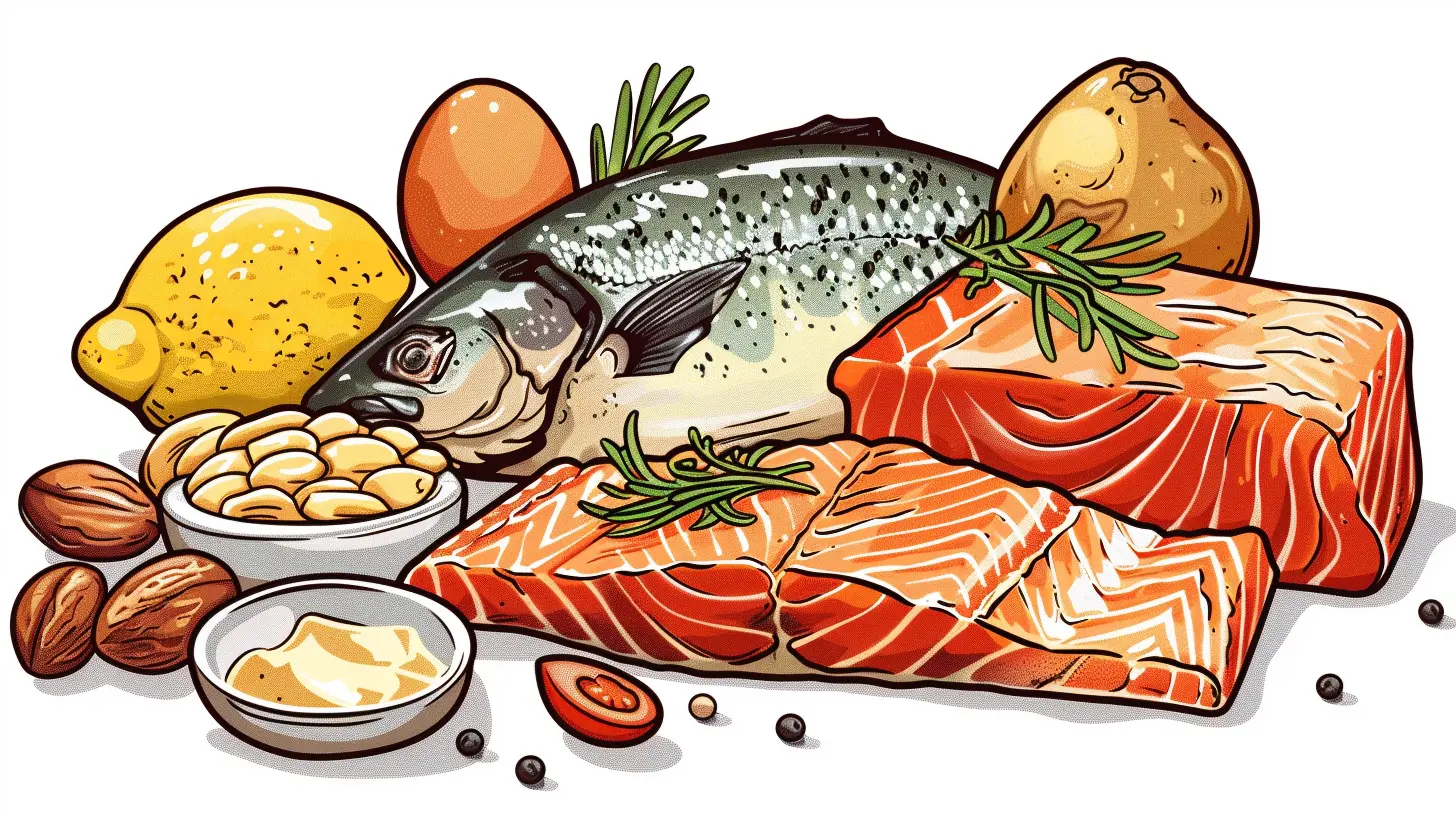How to Overcome Keto Plateaus and Stay on Track
21 September 2025
So, you’ve been crushing it on the keto diet—feeling energized, dropping pounds, and maybe even converting your friends to the low-carb lifestyle. But then, out of nowhere, progress stalls. The number on the scale won’t budge. Your jeans fit the same. Motivation starts to dip. Sound familiar?
Welcome to the dreaded keto plateau.
If you’re stuck in that frustrating limbo, don’t worry—you’re not alone. It happens to almost everyone on a long-term ketogenic diet. The good news is there are smart, sustainable ways to bust through that plateau and keep moving toward your goals. In this article, we’ll dig into why keto plateaus happen and what you can do (today!) to push past them and stay on track.

What Is a Keto Plateau, Really?
Let’s start with the basics.A keto plateau is that annoying period when your weight loss stalls even though you’re still sticking to your keto plan. You’re eating low-carb, staying in ketosis (or so you think), but the scale won’t cooperate. It can be confusing and demotivating, especially if you were seeing steady progress before.
But here’s the truth: weight loss isn’t always linear. Bodies are complex, and a stall doesn’t mean failure. Often, it’s a sign that your body has adjusted, and now it’s time to tweak the plan.

Common Reasons You Hit a Keto Plateau
Before diving into solutions, let’s look at why plateaus happen in the first place. It’s usually one—or a mix—of these culprits:1. Hidden Carbs Have Sneaked In
You may think you’re under 20g of net carbs a day, but are you really?Carbs can be sneaky. Sauces, dressings, supplements, and “low-carb” snacks often contain more sugar or starch than you realize. A few grams here and there can add up and bump you out of ketosis without you knowing it.
2. You’re Eating Too Many Calories
Yes, keto is great for appetite control, but calories still matter—especially once your body’s adapted. If you’ve increased your fat intake too much (it is delicious, after all), you might be eating more energy than your body can burn.3. You're Not Tracking Properly
Keto becomes second nature over time, but that can also lead to sloppiness. If you’ve stopped tracking your food entirely, you might not have a clear picture of what’s really going on.4. Too Much Dairy or Nuts
Let’s face it: cheese and almonds are keto darlings. But they’re also calorie-dense and easy to overeat. These can contribute to a plateau if enjoyed too enthusiastically.5. Not Enough Movement
Even the cleanest keto diet can plateau if you're not moving your body. Exercise isn’t just for burning calories—it boosts metabolic health and supports fat loss.6. Stress and Sleep Sabotage
High cortisol levels (thanks, stress!) and poor sleep can throw your hormones off and bring your progress to a halt. Keto or not, your body needs rest and balance to function properly.
How to Bust Through That Keto Plateau
Okay, now that we know the “why,” let’s get into the “how.” These strategies are realistic and sustainable—no starvation or magic pills here. Just real, practical changes.1. Reassess Your Macros
When was the last time you recalculated your macros?As you lose weight, your energy needs change. The amount of fat, protein, and carbs that worked when you were 20 pounds heavier might not work now.
Use a macro calculator, input your current stats, and adjust accordingly. You might need to reduce fat intake slightly or tweak your protein.
💡 Pro tip: Aim for moderate protein, high fat, and keep carbs under 20–30g net per day.
2. Track Everything (Yes, Everything) Again
Dust off that food scale and tracking app. For a week, go back to basics and log everything—even the “harmless” extras like a splash of cream in your coffee or a handful of pistachios.You may be surprised by what’s sneaking in and pushing your carb or calorie count over the edge.
Think of it as a keto audit. It’s not forever—just a helpful check-in.
3. Try Intermittent Fasting
If you haven’t already, intermittent fasting (IF) can be a powerful tool to overcome a plateau.By shortening your eating window (say, eating between 12–8 PM), you give your body a chance to tap into fat stores more effectively and regulate insulin levels.
Common fasting schedules include:
- 16:8 (fast for 16 hours, eat during 8)
- 18:6 or even one meal a day (OMAD)
IF pairs beautifully with keto, but make sure you’re still hitting your nutritional needs in your eating window!
4. Clean Up Your Keto
Let’s be honest—dirty keto can sneak in. There’s nothing wrong with the occasional low-carb treat, but if your day looks like:- Bacon
- Cheese
- Almond flour cookies
- Diet soda
… you might be keto-ing too hard on processed foods.
Challenge yourself to go strict for a week:
- No dairy or artificial sweeteners
- No processed keto snacks
- Focus on whole foods: meat, fish, eggs, leafy greens, and healthy fats
It might surprise you how your body responds when you clean it up.
5. Cut Back on (or Cut Out) Dairy
Yes, cheese is life. But it’s also calorie-dense and insulinogenic for some people. That means it can affect your blood sugar and stall fat loss.Try going dairy-free for a week or two. Replace cheese with avocado, nuts, coconut milk, or olives. Not forever—just a reset.
Many people break through plateaus by ditching dairy temporarily.
6. Move More—But Smartly
You don’t need to become a gym rat, but your body does need movement. Regular exercise helps burn extra calories, builds muscle, and keeps your metabolism humming.Start small:
- Walk daily (aim for 10,000 steps)
- Add resistance training 2–3 times a week
- Try yoga, HIIT, or cycling
Consistency beats intensity. Just keep moving.
7. Prioritize Sleep and Stress Management
Your body isn’t going to burn fat efficiently if it thinks it’s under attack.High stress = high cortisol = fat storage mode. And lack of sleep compromises insulin sensitivity and hormonal balance.
Be kind to your nervous system:
- Aim for 7–9 hours of sleep
- Turn screens off an hour before bed
- Practice deep breathing, meditation, or journaling
- Go for nature walks
Sometimes, plateau breakthroughs happen when you stop focusing on the scale and just take care of yourself.
8. Be Patient—And Don’t Panic
This one’s tough, I know. But sometimes what feels like a plateau is just your body adjusting. Water weight, hormonal cycles, and muscle gain can all mask fat loss on the scale.Give it time. Take measurements. Track how your clothes fit. The scale isn’t the only marker of success.
Oh—and please don’t go back to carb-heavy eating just because the scale won’t move for a week. You’ve come too far.

What About a Keto “Refeed” or Carb-Up?
This is a hot topic—and a controversial one. Some people swear by doing a strategic carb refeed every few weeks to kickstart fat burning. The theory is that it resets leptin levels and boosts metabolism.If you’re doing targeted or cyclical keto and it’s working for you, great. But for most people on strict keto, increasing carbs can backfire.
If you try a refeed, keep it clean:
- Use whole-food carbs (sweet potato, berries, quinoa)
- Limit to 1–2 meals
- Pay close attention to how your body reacts
It’s not for everyone, but for some, it works.
Final Thoughts: Keto Is a Journey, Not a Sprint
Plateaus are frustrating, no doubt. But they’re also normal and even expected on a long-term diet like keto.The key is not to give up, radically overhaul everything, or throw your hands in the air. Instead, be curious. Investigate. Experiment. And most importantly, give your body time.
Think about how far you’ve come—how your energy has improved, how your cravings have faded, how much stronger and more confident you feel. That’s progress, even if the scale doesn’t always reflect it.
So hang in there. Reassess, reset, and refocus. You’ve got this.
And remember: keto isn’t just about the number on the scale—it’s about the health you’re building, one choice at a time.
all images in this post were generated using AI tools
Category:
Keto DietAuthor:

Arthur McKeever
Discussion
rate this article
1 comments
Kismet Pope
Stay consistent and adjust macros.
September 22, 2025 at 5:00 AM

Arthur McKeever
Thank you! Consistency and adjusting macros are key strategies for overcoming plateaus.


